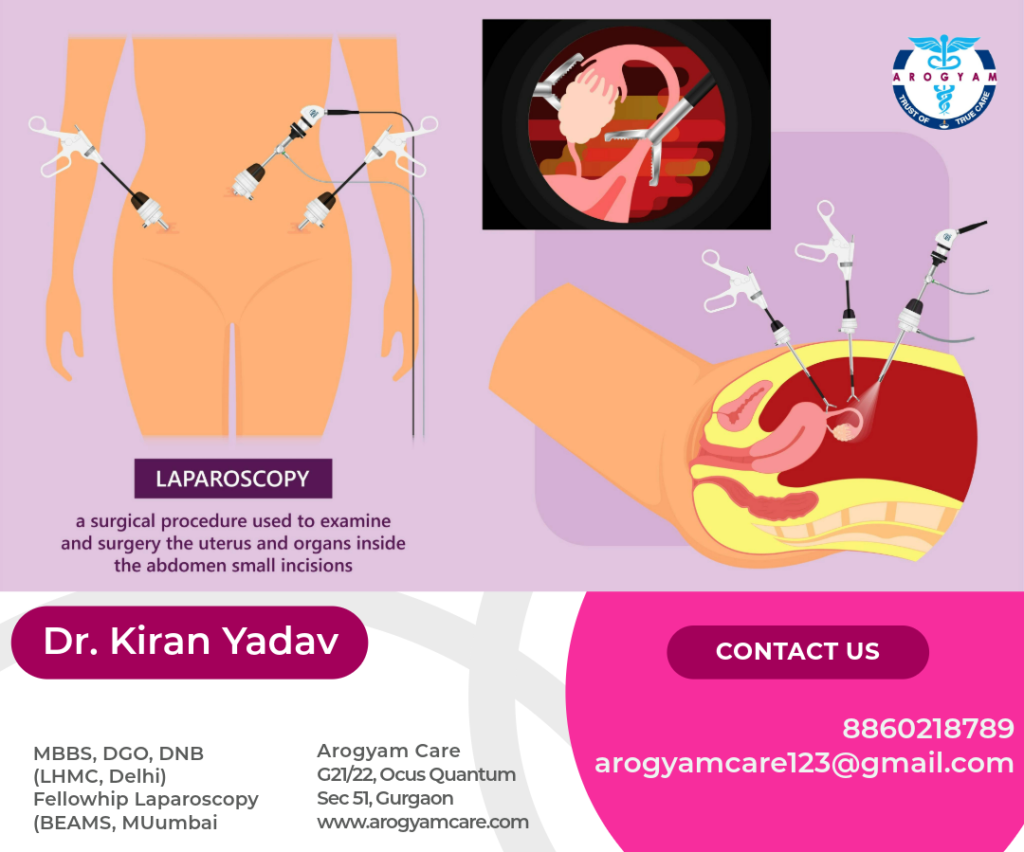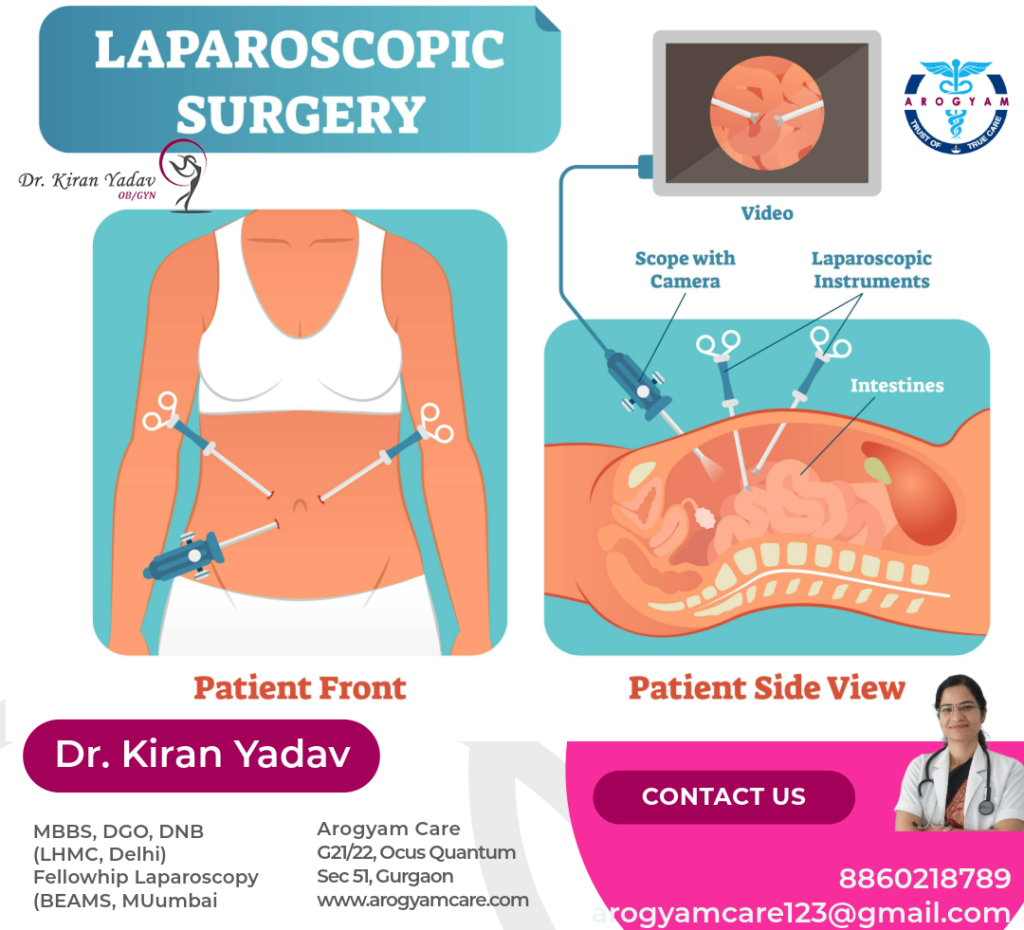What is laparoscopic Surgery in Gynecology?
Laparoscopic gynecologic surgery is a way of doing surgery using small incisions (cuts). It is different from “open” surgery where the incision on the skin can be several inches long. Laparoscopic surgery sometimes is called “minimally invasive surgery.”
How laparoscopic surgery is done?
Laparoscopic surgery uses a fine instruments which are long, and slender. These are inserted into the abdomen through a small incision. It has a camera attached to it that allows the gynecologist to view the abdominal and pelvic organs on an electronic screen. If a problem needs to be fixed, other instruments can be used. These instruments usually are inserted through additional small incisions in the abdomen.
How Laparoscopic Surgery Works
Laparoscopic surgery involves the use of a laparoscope, a thin, flexible tube equipped with a light and a camera. Here’s how the procedure generally works:
Small Incisions: Instead of a large incision, the surgeon makes several small incisions in the patient’s abdomen, usually no more than half an inch in length.
Insertion of the Laparoscope: The laparoscope is inserted through one of the incisions. The camera on the laparoscope transmits images to a monitor, giving the surgeon a clear view of the surgical area in real-time.
Surgical Instruments: Additional small incisions are made to insert specialized surgical instruments. These instruments are used to perform the procedure, guided by the images on the monitor.
Completion of Surgery: Once the operation is complete, the instruments and laparoscope are removed, and the small incisions are closed with stitches or surgical tape.
Benefits of laparoscopic surgery:
Laparoscopy gynae surgeries has many benefits.
- There is less pain after laparoscopic surgery than after open abdominal surgery, which involves larger incisions, longer hospital stays, and longer recovery times.
- Recovery from laparoscopic surgery generally is faster than recovery from open abdominal surgery.
- The smaller incisions that are used allow you to heal faster and have smaller scars.
- The risk of infection to the abdominal wound also is lower than with open surgery.
Laparoscopy usually is performed with general anesthesia. This type of anesthesia puts you to sleep.
Conditions treated by laparoscopy
Laparoscopy may be used to look for the cause of chronic pelvic pain, infertility, or a pelvic mass. If a problem is found, it often can be treated during the same surgery. Laparoscopy also is used to diagnose and treat the following medical conditions:
Endometriosis: Laparoscopic surgery for endometriosis:
If you have signs and symptoms of endometriosis and medications have not helped, a laparoscopy may be recommended. The laparoscope is used to see inside your pelvis. If endometriosis tissue is found, it often can be removed during the same procedure.
Fibroids: Laparoscopic Myomectomy:
Fibroids are growths that form inside the wall of the uterus or outside the uterus. Most fibroids are benign (not cancer). Fibroids can cause pain or heavy bleeding. Laparoscopy can be used to remove them.
Ovarian cyst: Laparoscopic Cystectomy
Some women have cysts that develop on the ovaries. Mostly cysts can be managed with medical treatment. But if they persists they be removed with laparoscopy.
Ectopic pregnancy: Laparoscopic surgery for ectopic pregnancy:
Laparoscopy may be done to remove an ectopic pregnancy
Pelvic floor disorders
Laparoscopic surgery can be used to treat urinary incontinence and pelvic organ prolapse
Hysterectomy: Laparoscopic Hysterectomy:
– removal of uterus can be done safely by laparoscopy. There are many conditions when some women need to undergo removal of uterus like excessive uterine bleeding no controlled with medications, fibroids, adenomyosis, problem in endometrial lining.
These benefits have made these surgeries very common today. Most doctors would suggest this surgery.
Risks and Considerations
While laparoscopic surgery has many benefits, it’s not without risks. Potential risks include:
Injury to Organs: The instruments used in laparoscopic surgery can sometimes cause damage to nearby organs or tissues.
Infection: Although the risk is lower than with open surgery, infections can still occur at the incision sites.
Bleeding: There is a risk of bleeding during or after the procedure, which may require additional surgery to correct.
Complications from Anesthesia: As with any surgery, there is a risk of complications related to the anesthesia used during the procedure.
Conversion to Open Surgery: In some cases, the surgeon may need to switch to an open surgery approach if complications arise or if visibility is poor.




